






By Viv Posselt
Remko Pootjes is on a mission to save discarded pianos and spread the magic of music, and he wants Kiwi companies to help him roll it out.
For the past few years, Ōtorohanga’s piano man has been saving unwanted pianos from the landfill or the firepit by turning them into community pianos or bespoke merchandising display units to be leased out. Funds from those leases or sponsors go into providing piano lessons for children… hence his tagline ‘Pianos for Kids’.
“Schools today don’t teach piano in the same way they did years ago, so kids wanting to play need to have parents who can afford private lessons,” he said, “and not all kids want to limit their extracurricular activities to sports.
“I believe piano lessons should be offered as a lifeskill, like swimming lessons, but when I approached 11 schools in the area asking them to support my concept of teaching kids to play, they all declined. It was either too expensive, the pianos were too heavy, or there weren’t enough kids interested. To me, even one student makes it worthwhile.”
Last year, Pootjes set up The Remiano Charitable Trust – a nifty play on his nickname ‘Rem’ and ‘piano’ – as a registered charity to ‘transform old pianos into new opportunities’ and help fund the free lessons.
He finds unwanted pianos from wherever he can, brings them to his workshop in Ōtorohanga, and

either restores them to full playing glory or turns them into pieces of furniture. Some go into streets as

community pianos, others become eye-catching bookstands or display units in shops.

Pootjes says there are hundreds of unwanted pianos in communities all over New

Zealand. A quick internet search can unearth around 100 on any given day, some of them going for just a couple of dollars.
“It is amazing how many just get dumped.”
The trust doesn’t sell the pianos, it only leases them, he said.
“People pay a monthly rental fee, but the pianos remain the property of the trust.”
Surprisingly, Pootjes doesn’t play the piano himself, but his partner does. The Dutch-born former engineer came to New Zealand in the 1970s, working in his field as well as in sales and in investigations. He is also a volunteer firefighter.
The idea to repurpose unwanted pianos came during Covid when a friend asked for helping in dumping an old piano. Pootjes wanted to salvage it … and so it started.
In just the past few weeks, Pootjes has launched a new website and is looking for a business partner who will help take his ‘Play Me Pianos’ to most New Zealand cities. He is also fast-tracking a new Piano Depot collection and workshop container concept that he wants to roll out near refuse dumps or zero waste collection points.
Through Pootjes’ efforts, people are tickling the ivories in towns all over the region and children who may not otherwise have had the means are learning to play.
“We are putting new pianos in towns all the time, and are looking at growing the entire operation,” he said. “There is a lot of interest, so exciting times ahead.”












We have five copies of Jenny-May Clarkson’s autobiography Full Circle to give away to King Country News readers courtesy of HarperCollinsNZ. Just read Community Champions on page 12 and answer the following: Which marae in Piopio did Jenny-May’s family live less than 100m away from? To go into the draw, answers by Thursday 22 May to editor@goodlocal. nz or drop your entry into our King Country News office, 18 King Street, Te Kūiti.
Delays are expected for six weeks due to road closures on Rangitoto Road in Te Kūiti to repair storm damage. A section of the road – one kilometre each side of Tate Road – will be closed during weekdays until June 20. The work involves repairs to the road surface, upgrading drainage and the construction of a timber retaining wall.
Bike racks are back in use on Waikato regional bus services from Cambridge, Te Kūiti and Te AwamutuKihikihi this week. The Bus and Coach Association (BCA) and its members who operate contracted bus services in the Waikato region issued a national notice to temporarily withdraw the use of bicycle racks on buses in November last year.
By Jon Rawlinson
Piopio College has looked backwards to deal with a staffing issue.
Encouraging teachers who have moved on to other professions, or retired, to assist on the frontline has helped provide cover in his staffroom, principal Ben Draper, said.
“It’s still tough to find staff, particularly maths teachers. So, we’ve had a retired teacher coming in to upskill some of our teachers who don’t specialise in maths. We have two – one’s in and one’s starting in about two weeks’ time. It’s worked very well.”
The News reported last week that King Country schools were struggling to attract teachers to move into the district.
Draper said another strategy to combat the problem had also worked.
“Because we couldn’t fill the maths role, we had our Year 13s doing maths with a tutor online and a primary school teacher at our school helping them at the same time. The result has been some of the best grades for term one.”
Draper sympathises with Āria School principal, Pam Voyce, who shared her difficulties attracting quality teachers last week.
“I agree with Pam – it is extremely hard to staff schools and near on impossible in rural areas. Āria School is a bit more rural than us, which would make it harder, but everyone is struggling to find good full time teachers.”
In some ways, high schools have a tougher task filling roles. However, Piopio College has found another simple, yet effective solution to this.
“It can be more difficult for secondary schools as they’re usually trying to find subject specialists,” Draper said. “But we actively seek primary school teachers because they’re
very adaptable, able to teach across multiple subjects rather than just in their core area.
“Some secondary schools may prefer specialists, but in a rural school, they have to teach across [various] subjects anyway.”
More time away from class to learn and plan is another bonus for primary teachers at Piopio College, Draper said.

The best solution for a lack of qualified teachers is elementary – more need to be trained. However, provided they are open to learning as well as teaching, primary teachers can expect a warm welcome at Piopio College, he said.
“Generally, teachers these days understand that it’s only after they qualify that the real learning begins. We can definitely help with that.”
By Jon Rawlinson
Security at Te Kūiti Hospital is not fit for purpose and nurses feel unsafe, their union says.
New Zealand Nurses Organisation spokesperson Anne Daniels said rather than specialised security, an ‘integrated security, cleaning and attendant services’ model operates at the hospital.
“There have been numerous instances when aggressive members of the public have presented to the hospital and the cleaner, also the security guard, is in a separate part of the hospital,” she said. “This means other staff (such as nurses) having to attend to potential violent and harmful situations in the absence of a security guard.”
The model is used by Health New Zealand – Te Whatu Ora through ISS Facility Services Ltd at four rural hospitals - Te Kūiti, Taumarunui, Tokoroa and Thames.
Staff members at the hospitals are ‘multiskilled’ but this may mean they are not adequately trained to meet the requirements for the role, Daniels said.
“They are cleaners, orderlies, grounds and maintenance staff as well as security. This presents a huge risk to everyone including nurses, doctors, receptionists and patients as well as the staff without the time or resources to provide security. Their right to a safe and healthy workplace
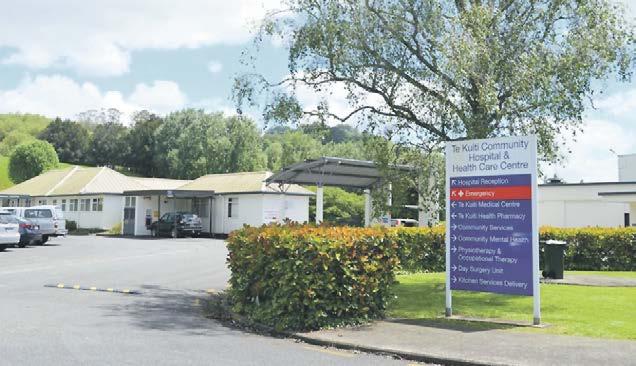
is not being adhered to,” Daniels said.
Another union is also making a stand for its members including the ‘integrated’ hospital staff.
Enabling staff to cover multiple roles was not a problem provided there was enough of them, E tū director, Mat Danaher, said.
“Particularly in rural areas, not just in Waikato, people carrying out mixed duties has been happening for a number of years. Some members


have been keen to become multiskilled. What we’re not fine with is understaffing.
“Staff can’t provide a decent level of care to patients if there’s not enough of them, and that doesn’t just mean nurses. As the nurses have identified, it also means all those who support them.”
He said a “reduction in numbers by stealth” was at the heart of the issue, Danaher said.
Health NZ said the model had
been in place for several years at Thames and Taumarunui before being introduced at Te Kuīti and Tokoroa hospitals.
Group director operations Stephanie Doe said Health NZ was not aware of any security incidents where staff had been unable to respond to appropriately.
A recently completed review is being considered and was intended to share the findings and recommendations.






























By Chris Gardner
Kāwhia Community Board was told to stop debating the future of Māori land being used for boat parking in Kāwhia this week.
Board deputy chair Hinga Whiu halted the conversation on the future of the Kaora Street boat park after Ōtorohanga District Council business enablement group manager Graham Bunn brought recommendations to Thursday’s board meeting.
Bunn recommended the board support the continuation of a 30-year-old
gentlemen’s agreement that saw the community use the boat park in exchange for the council paying rates on the land.
“This is their whenua,” Whiu said. “It’s come from their ancestors. I think you are going to have to stop talking about it. You have got to realise that this is whanau land that we are talking about.”
Bunn’s report recommended not pursuing a formal lease agreement.
“If a formal lease agreement was negotiated, the area would need to be upgraded and the boat parking area potentially
increased. Costs to undertake any upgrade is significant and there would be a rates impact for Kāwhia,” he said,
Three quarters of the cost would be funded by district ratepayers with 25 per cent funded by Kāwhia ratepayers.
Board chair Geoff Wood thought it was worth trying to re-open negotiations to lease the land.
“We don’t even know the landowners,” Bunn replied. “It’s not an easy process. We don’t want to have these discussions every three-year term.”
Kāwhia councillor Kit
Jeffries thought discussions on upgrading the boat park were pointless without a lease agreement.
“If we can’t get a lease, the whole thing about this boat park is a dead duck,” said board member Richard Harpur.
It was then that Whiu suggested the board halt discussions.
Council regulatory and growth group manager Tony Quickfall then warned the status quo could result in the loss of the land.
“It’s by good will, and a gentleman’s agreement. They could say no more boat parking and put a fence up.”
A total of 76 exhibitors will be promoting their products at the second Waipa Home and Leisure Show starting tomorrow.
The event, launched by Good Local Media last year, returns to the Mighty River Domain at Lake Karāpiro for three days – Friday to Sunday.
“There is something for every member of the family no matter your age, your budget or if you just want a great morning or afternoon out at an affordable price with families or friends in a relaxed and friendly environment,” Advertising and Commercial director Janine Davy said. Exhibitors returning from last year will be joined by a host of first-time exhibitors for Waipa’s second show.
“Huis Joinery, back for another year, decided to extend their stand, so that they could hang a barn door between
their kitchen and laundry area. One barn door turned into two when they decided to give one barn door away at the show,” Davy said.
Exhibitors include home building and renovation specialists, indoor and outdoor products for your home. Health and wellbeing features sports products, body and bone scanning, light and magnetic therapies, hearing health, orthotics and beeswax products.
Favourites: award-winning chocolates, artisan Gouda cheese, Indian spices, and organic gin and vodka with fruit mixes are all there.
Davy said it was an opportunity to support Waipā businesses “who have pulled out all the stops to impress” and national businesses which have travelled to Waipā so customers do not have to go to the main centres.
“The best scenario, from my point of view, is if the landowners set themselves up as a commercial operation and charge everyone,” Harpur said.
Whiu said it was not for the board to make such a suggestion.
The board voted to support the continuation of the historic agreement with the landowners, noting that the council
would continue to pay the rates in compensation and recommended the council enter into formal lease agreement discussions with the landowners.
The board also asked the council to investigate the parking situation in Kāwhia, particularly around the wharf and boat ramp area, and prepare a full report on options for enforcement and potential charging.
Sculptor and arts icon Fred Graham has left pieces of public art around the district which will ensure he is not forgotten.
Graham, 96, who died last week, was born in Arapuni, raised in Horahora and was a Tainui kaumatua of Ngāti Korokī Kahukura descent.
His work includes the newly installed Te Manu Rangimaarie (bird of peace) at the State Highway 1 and 29 Piarere roundabout.
His work around Te Awamutu includes the carved stone manu with three hatchlings in Sculpture Park and the Lamp Post and Fountain of Birds in the Rose Gardens.
The 12-metre high $609,000 sculpture in Piarere, which weighs about 12.5 tonnes, celebrates the connection between hapū and iwi to the land and river and the mythical manu (bird).
Made of weathered steel, Te Manu Rangimaarie presents a story of heritage, unity, and peace and reflects the deep connection between ngā hapū o Waikato (the sub-tribes of Waikato), the land, and the many waterways that run through the region.
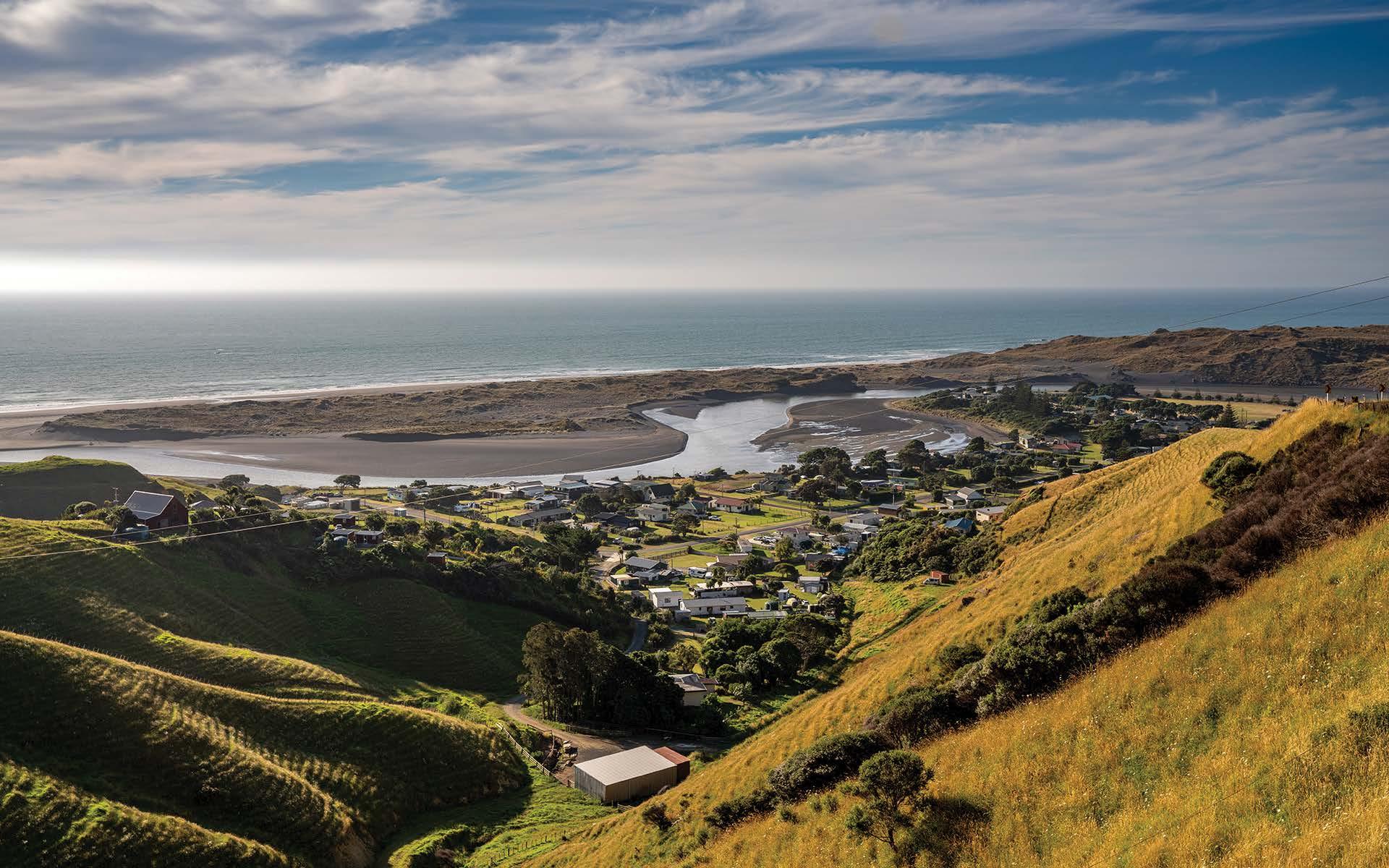
$6.0 million in TLC Discount payments is going back to beneficiaries this financial year - all because The Lines Company is 100% owned by Waitomo Energy Services Customer Trust (WESCT), your customer Trust. Discount will appear on your May or June power bill as a credit.

in combined TLC Discounts has been returned to WESCT beneficiaries for the four financial years ending 2025.





By Mary Anne Gill
There were no objections to the Representation Commission’s plans to expand Barbara Kuriger’s Taranaki-King Country electorate, which includes a huge chunk of the Waipā district.
currently skirts around Taumarunui, taking in the neighbouring eastern rural areas of Ōhura and Whangamōmona and across to Taranaki.
In addition to Te Awamutu, Rangiaowhia, Ngāhinapōuri and Pirongia in Waipā, her electorate goes up as far as Port Waikato and skirts down to Pureora Forest Park near Taupō.












But there were 636 objections to other proposed changes to electorates in Auckland – Mount Albert, Epsom, Glendene, Ōtāhuhu - Wairapapa, Hutt South, Wigram, Kenepuru, Rotorua, Christchurch and Wellington.
The changes to Kuriger’s electorate, saw the return of Taumarunui from Rangitikei. It was a natural fit with Te Kūiti and Ōtorohanga, Kuriger told The News, as it too was part of the traditional King Country region.
Her rural electorate
Taranaki-King Country was created ahead of the first MMP election in 1996 from most of the old King Country seat and parts of the Taranaki, Waitotara and Waipa electorates.
Kuriger has held the seat since 2014; before that it was Shane Ardern who won a 1998 by election when former prime minister Jim Bolger became New Zealand’s ambassador to the United States.
The objections to the latest

changes related to 40 North Island general electorates, 11 South Island general electorates and two Māori electorates. Most of the objections were about the proposed boundaries (574) and a smaller number relate to the name of an electorate (42), or both the boundary and name (20).
Hearings will be heard next month and boundaries finalised in August.
A survey of kākā in Pureora Forest suggests there are many girls as boys, and the conservation department attributes that to pest control.
Stoats and possums make female kaka and chicks prime targets during nesting when the birds stay in tree cavities for long periods.
But of 22 birds captured and released at 14 sites in Waipapa and two in Pikiariki over
a week last October 11 were male and 11 female.
DoC Principal Science Advisor Terry Greene said the previous count in 2023 had been concerning because few birds were caught and all were males.
At sites where there has been no predator control the ratio has been as low as one female to five males, but the Pureora population was doing “extremely well”.








By Janine Krippner
It can be a challenge to grasp the scale of geologic processes on land, and I’m finding this even more true in the marine environment. Part of the difficulty lies in the lack of information — we’re often working with sparse datasets until the entire seafloor is mapped. When we do examine the deep seafloor, it’s usually from afar (from the ocean surface), and there aren’t the usual human-scale reference points we rely on to quickly sense size, like a car, building, or city.
I’m fascinated by landslides on land and below the sea, especially the large ones. On volcanoes, we call these debris avalanche deposits. The most famous one was produced by Mount St Helens during its catastrophic 1980 eruption — an event that happened this week, 44 years ago.
As landslides move, the material involved (soil, rock, and whatever else is dragged along) behaves like a fluid. This allows it to travel enormous distances. The Mount St Helens deposit extends 24 km from its source. That’s small compared to many seafloor deposits.
Understanding submarine landslides is not only key to understanding the forces that shape our planet, but also crucial because they can damage seafloor infrastructure — including communication cables that carry our internet. And they can trigger tsunamis.
When there’s more water mixed with the sediment, we call these flows turbidity currents, which are known for the impressive distances they can cover. The first time we recognised one was in 1929, when the transAtlantic telegraph cable was severed. The cause was a landslide triggered by the Grand Banks earthquake, which also generated a tsunami that killed 28 people in Canada.

The largest known submarine landslides are the Storegga Slides offshore Norway, which transported sediment over 800km from the continental shelf — roughly the length of the North Island. The affected area was about 95,000 square kilometres, not far off the area of the North Island.
The continental shelf is the relatively shallow zone surrounding a landmass, compared to the deep ocean. To produce these massive slides, around 300km of the Norwegian continental shelf collapsed — roughly the distance from Cape Reinga to Auckland.
The Storegga deposits show that several major collapse events occurred. Around 8150 years ago, one of these slides triggered a tsunami that inundated coastlines across northern Europe. It remains the largest known tsunami in the North Sea and northeastern Atlantic during the last 12,000 years. Waves exceeded 20 metres.
As with many geologic processes I write about, there are typically far more small events than large ones. But it’s important to understand both the likely and the worstcase scenarios. Smaller submarine landslides are quite common — we just don’t always know they’ve happened.
These hidden movements beneath the waves may seem distant, but they shape our coastlines, affect global communications, and remind us that Earth is never truly still. Submarine landslides are not just dramatic geological events, they’re part of the shaping of our planet, quietly sculpting the seafloor far below the surface.



In 1914 it was the local newspaper editor who often got called in to decide a bird’s merits, as Meghan Hawkes found out.
A serious coach accident occurred at Hangatiki to the coach returning from Waitomo Caves with I4 passengers, including Mr Wilson of the Tourist Department. The breaks failed rounding a corner at the foot of an incline and the coach swung into a bank. Fortunately, the horses remained quiet. Several of the passengers were injured and Dr Gilmour, of Wellington, who was a passenger, rendered first aid. The passengers were then taken to Hamilton by the Main Trunk train.
Ōtorohanga residents were considerably annoyed by the number of stray cattle and horses roaming the streets at night. One businessman found no less than four horses camped for the evening under his office verandah. Mr Banner, storekeeper, had his shop window broken by a horse which had pushed against it. Mr J Ormsby was also unfortunate in having a valuable cow injured by a steer which broke into his paddock. On hearing of this state of affairs a member of the Town Board had
a general round up and succeeded in impounding 19 head of cattle. Some amusement was caused next day when it was discovered that 13 of the impounded cattle belonged to the impounder’s family.
Pegging out an uncompleted section of the Marakopa to Te Kūiti telephone line, which had been the subject of a great deal of heated correspondence, was finally begun, two men leaving Te Kūiti for that purpose. Hollow iron telegraph poles, fireproof and light, were used throughout. These solved the difficulty of transportation in rough bush country, being easily carried from point to point as the work progressed.
The head and feet of shag were forwarded to the editor of the King Country Chronicle for inspection by an astonished angler. The shag had been very large, his wings from tip to tip measuring 4ft 8in. The angler over the previous eight years had dispatched about 30 shags all about half the size of this one. The demise of the shag would
make a big difference to the fish in the Awakino River. The editor agreed that the specimens forwarded indicated a very big bird which would do enormous damage in a trout stream. It appeared to be an ordinary shag of extraordinary size, and the appendages were now forwarded on to an authority for his opinion. Early rain began on the morning of Pio Pio’s Anglican Church bazaar and continued far into the night but in spite of this everything went with a swing from beginning to end. The children’s dip, the produce and lolly stalls sold out. The heavy rain made it impossible for many mothers to travel from a distance, and many of the useful things on the sewing stall were not sold, though very good business was done. Mr Warmington showed Punch and Judy both afternoon and evening to appreciative audiences. An enjoyable dance to excellent music followed.




Bupa St Kilda Retirement Village in Cambridge has 19 brand new serviced apartments open now. Our spacious one and two bedroom apartments feature either an ensuite or separate bathroom, kitchenette, and open plan lounge and dining. Enjoy the freedom of independent living with a domestic services package, which includes weekly housekeeping, linen laundry, and two meal services daily (lunch and a light dinner).
St Kilda Care Home is located on site and offers care suites, rest home, hospital, and dementia levels of care, subject to availability.


There is no doubt the rapid rise of the use of mobility scooters is exponentially increasing every year. And just as it can be difficult for someone who has driven all their adult life to suddenly find they can no longer safely do so, or pass the required two yearly license tests once over a certain age, it can be difficult to understand that there is a legal difference between a car and a mobility scooter. Understanding the road laws around mobility scooter use in New Zealand is essential for safety, not just for users but for other pedestrians and road users as well. While mobility scooters offer valuable independence for people with limited mobility, they are governed by specific rules to ensure they are used safely and responsibly.
In New Zealand, mobility scooters are legally classified as pedestrian vehicles, which means they are not considered motor vehicles and do not require registration, licensing, or insurance.
However, users must follow pedestrian rules, which primarily means riding on the footpath wherever possible, and if riding on the road is a necessity, then doing so as far to the left as can be managed.
Roads should only be used when there is no suitable footpath available.
The law states that mobility scooters must be used in a safe and considerate manner. On footpaths, this means keeping to a low speed - typically no more than 4–8 km/h, which is close to walking pace - and giving way to
other pedestrians.
Users should always have attached, and use, a bell or horn if necessary, and slow down or stop near crowded areas to avoid accidents. When crossing roads, mobility scooter users should use pedestrian crossings where available and wait for green signals at traffic lights.
Although scooters may appear similar to small vehicles, they are not given the same rights as cars or bikes when on the road.
Users must cross roads as a pedestrian would, not by driving down the road to the next intersection.
There are no age limits for using a mobility scooter, but users should be physically and mentally capable of controlling it safely. Many community centres and local councils offer training and safety workshops for older adults or new users.
In rural areas like parts of the Waikato, where footpaths may be limited, mobility scooter users may need to travel short distances on the road. In these cases, users should stick to the edge of the road, travel facing oncoming traffic where safe, and wear highvisibility clothing. Adding a flag or lights to the scooter is also recommended, especially in areas with poor lighting or high-speed traffic.
While helmets are not legally required, using one is encouraged if you’re travelling on roads. It’s also wise to regularly maintain the scooter - check brakes, tyres, lights, and battery levels.





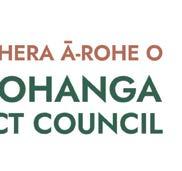

We’ve all seen and done this – gone past a stationary school bus which has children either embarking or disembarking. But it appears too many don’t know the speed they cannot exceed when doing so.
In New Zealand, the rules around passing stopped school buses are very clear - and they exist to protect children, who can be, through the sheer advent of their youth and inexperience, unpredictable when crossing roads.
Whether you’re driving in a city, large town, or along rural roads in the Waikato, you must slow down and proceed with extreme caution when a school bus is stopped to pick up or drop off children.
The law states that when a school bus has stopped to let children on or off, the speed limit for vehicles passing the bus in either direction is 20 km/h. This rule applies to both sides of the road, regardless of whether you’re approaching from the front or behind. The lowered speed limit gives drivers time to react if a child suddenly crosses the road, which is especially important in rural areas where there may be no pedestrian crossings or footpaths.
Most school buses display a sign or flashing lights to indicate they are stopping or have stopped.
When these are active, drivers must reduce speed to 20 km/h until they have completely passed the bus and any children who may be crossing. Ignoring this rule can result in fines and demerit points, and more importantly, puts children at serious risk.
The rule applies at all times - whether it’s on a quiet country road or a busy suburban street. Remember, it also applies regardless of whether the bus is on your side of the road or the opposite. In some parts of New Zealand, like the Waikato, where many students rely on rural bus routes to get to and from school, this rule is particularly important for keeping young people safe.
Parents and schools are also encouraged to educate children about waiting until the road is clear and looking both ways before crossing.
But ultimately, the responsibility lies with drivers to be alert and cautious whenever they see a school bus stopped.




“Keep your vehicle safe this winter, get it checked at Prescott Toyota”











featured a good old town hall – where all the important functions were held, including my debutante ball and my brother David’s wedding – the RSA, the Cossie Club, the dairy, the post office and phone exchange, a bookshop, a clothes shop, a butcher, the voluntary fire brigade. You know, just a little New Zealand farming town.”
When sorting through scrapbooks heaving with articles and photos, Clarkson realised she had forgotten many incidences in her life, from her King Country roots to representing her country from the centre circle and broadcasting into the circular eye of the camera.
She embarked on the next chapter in her life, one that would take her ‘Full Circle’, a play on netball and a position she made her own in the centre circle.
“Me, age 10, short dark hair sticking up at the front, white T-shirt, smiling confidently at the camera. And my immediate thought is: Who is that girl?’
“I remember her but I don’t recognise myself in her. She was so determined. Always marched right past the Cloverleaf Dairy, which her parents managed, on her way to
school, never sparing a glance to the side and definitely not behind her.”
She shares a cultural journey too. From her Coffin lineage (well known in the Waikato and King Country) and Ngāti Maniapoto and Ngāti Kahu descent she reconnected with her heritage by taking a year-long Māori immersion class years later. Last year she added a moko kauae (traditional tattoo) to her chin despite fearing it might have an impact on her television career.
Whānau and identity run through her story, from her early years with her parents, brothers and sisters, through to the addition of her husband Dean, their twin sons and her two stepdaughters.
Clarkson was in the police in Hamilton when she first made the Silver Ferns in 1997. She was vicecaptain in 2001, represented them at the 2002 Commonwealth Games and won 26 caps before retiring from international netball at the end of that year.
Her broadcasting career began in Hamilton on Classic Hits with radio legend Ronny Phillips and took her in 2005 to Auckland where she fronted sports news, netball commentary and latterly breakfast TV.


Hairdressing, beauty & massage services Call NOW to book your appointment




2 Sheridan St, Te Kuiti | 07 444 7002 aurorahairandbeautyspa@gmail.com www.aurorahairandbeauty.co.nz



Specialist bone density and body composition scanning services
• DEXA Bone Density Scans
• DEXA Body Composition Scans Accurate results for your health and wellbeing
Inside Health on Mahoe 160 Mahoe St, Te Awamutu 07 870 4321 • 0800 BLUEPRINT info@boneandbodyblueprint.co.nz Mon-Fri 9am-5pm by appointment only Online bookings www.boneandbodyblueprint.co.nz




Dr. Scott Mouat (B.Chiro) Chiropractor
Dr. Alana Sherman (B.Chiro) Chiropractor









Across 1. Food regime (4) 4. Churchman (6) 8. Slow-moving ice mass (7) 9. Bush (5)
10. Among (4)
11. Adolescent (8)
13. Onlooker (9) 17. Valuer (8)
19. Bullets (abbr) (4) 21. Cowboy show (5)
Last week
22. Slope (7)
23. Turn upside down (6)
24. Compass
Across: 1. Inept, 4. Notify, 8. Learner, 9. Arose, 10. Scene, 11. Awkward, 12. Recite, 14. Gateau, 17. Toaster, 19. Anger, 21. Owner, 22. Drizzle, 23. Sludge, 24. Goods.
Down: 1. Illustration, 2. Erase, 3. Tangent, 4. Normal, 5. Thank, 6. Footage, 7. Headquarters, 13. Channel, 15. Amazing, 16. Bridge, 18. Tired, 20. Gizmo.


EGGHEAD
GENIUS GURU HIGHBROW











INTELLECTUAL KNOW-ALL
LEARNER
LECTURER LOGICIAN LUMINARY MAGI MASTERMIND
MATHEMATICIAN
MENSA MEMBERS
MENTOR ORACLE



PEDANT PHILOSOPHER
PRODIGY
READER SAGES
SCHOLAR
SCIENTIST
STUDENT SWOT
THINKER WISE MAN






Built in an era of quality craftsmanship and native timber, this attractive and sturdy three bedroom brick home has been built to stand the test of time.
Well-loved and maintained, this is genuinely a home you can move straight in and unpack and with a neutral decor to suit your furnishings.
A built in wood-burner will keep you cosy this winter and an internal access garage with auto-door is a bonus.
Arguably some of the best views in town from almost every window and outdoors offers


numerous spots for following the sun, or finding the shade.
A home to love for many years to come on a much sought after road if elevation and views are important.
Vacant now, with an immediate settlement available.
Call Karen or Kerry to find out more.

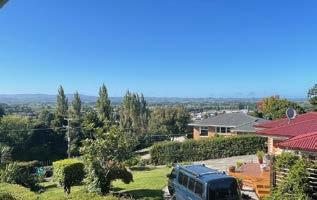
ADDRESS 37 Mountain View Road,
LAND SIZE 1411sqm
HOUSE 3 bedrooms, 1 bathroom, 1 garage
PRICE $559,000
WEBSITE blueribbonharcourts.co.nz
WEB ID OH22657
VIEW Open Home Sunday 3.15 - 3.45pm




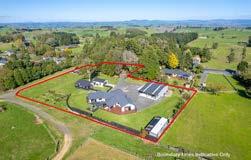

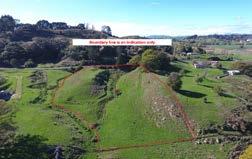


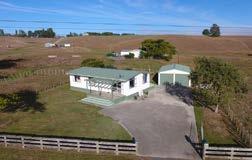




Sunday 18 May













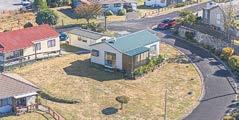

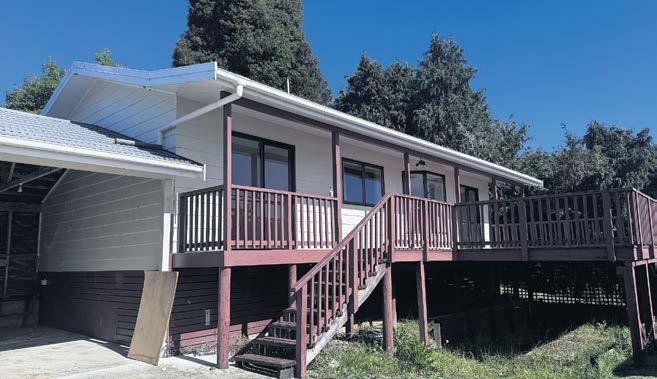
Home Sweet Hill Street!
Welcome to this charming property set on a generous 753 m2 sloping section - offering both space and potential in a peaceful, tucked-away rear position. Originally built in 1983, the home spans approximately 70 m2 and features two bedrooms and a full bathroom. Inside, the layout is simple and functional, with the kitchen, dining, and lounge areas combined into one open-plan living space - ideal for easy everyday living. Comfort is key here, with carpet running throughout the home, and a lovely balcony providing a spot to relax outdoors and take in your surroundings. There's a single carport for covered parking, plus additional off-street space for convenience. The property is connected to town water and council sewage services, making it as practical as it is appealing. Whether you're looking to enter the property market, downsize, or invest - this one's worth a closer look.










































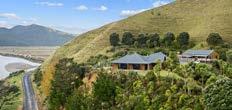






As the days grow shorter and the air carries a hint of chill, it may seem like the gardening season is winding down. But autumn is the perfect time to prepare for one of spring’s most delightful rewards: flowering bulbs.
From the cheerful nodding heads of daffodils to the vibrant petals of tulips
and the sweet fragrance of hyacinths, spring-flowering bulbs bring an explosion of colour just when we need it most. And the good news? Planting them now takes little effort and requires only a bit of planning.
The Right Time Spring bulbs need to be planted in autumn, before the ground becomes too cold
Katrina Christison Tidy Gardens
or wet. This means getting them in the ground from late March through May. This gives the bulbs time to establish roots over winter and ensures a healthy, robust bloom come spring.
Choosing What to Plant Daffodils are reliable and low maintenance, while tulips offer a stunning range of colours and shapes.

& LANDSCAPE SUPPLIES • Timber slabs • River stones • Garden boxes
BBQ wood • Garden mulch & Soils
Crocuses are among the earliest to appear, often blooming while frost still lingers. For scent lovers, hyacinths are a must. I also enjoy planting snowdrops and bluebells for a more natural, woodland-style garden, I plant bluebells under lifted hedges and around trees and once you have them they will multiply quickly.
How to Plant
Choose a sunny, welldrained spot — bulbs do best in soil that doesn’t become waterlogged. A general rule is to plant bulbs two to three times as deep as the bulb is tall. Plant with the pointed end facing up, spaced far enough apart to allow room for growth.
colder months. Simply plant and forget — and let nature do the rest. In spring, your reward will come in the form of vibrant blooms that lift spirits and announce the changing season.
To extend the flowering season, try planting a mix of early-, mid-, and lateblooming varieties. Layering bulbs of different heights — a technique known as “lasagne planting” in your pots.



As I don’t like having their foliage dying down after flowering in my garden I plant most of my bulbs in pots, so that I can bring them out when they are flowering and put them away when finished. Pots are also an excellent option, particularly for those with smaller spaces, they look great at the bottom of steps. Just be sure to use pots with good drainage and position them where they’ll receive plenty of winter sun.




KAWHIA
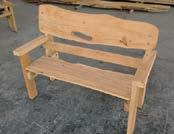

Once planted, bulbs require little attention. There’s no need for frequent watering or feeding over the
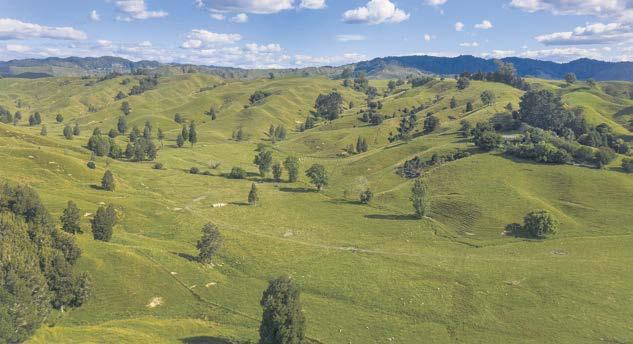
510 Barclay Road "Barclay"- Outstanding Performer
The Barclay family has been farming in the Aria district since 1932, growing their holding into the high-producing 867 hectare (more or less) farm it is today. This top-performing farm is built on hard work, fertility, and strategic selection of high-performing livestock.
• Consistent Fertiliser Applications: Never missed a year
Outstanding weight gain on all classes of livestock
Silage Production: On average, 400 bales made annually
Accommodation: Two dwellings - a large four-bedroom house and a three bedroom house
• Farm Infrastructure: Two three-stand woolsheds and multiple farm buildings
• Paddocks: Fenced into 151 paddocks
It is rare to have the opportunity to purchase a holding of this size, with the ability to winter and fatten cattle to the weights this property achieves year in and year out.



TENDER Plus GST (if any) (Unless Sold Prior) Closes 11.00am, Thursday 19 June VIEW 10.00-12.00pm Thursday 22 & 29 May and 05 June
pwylie@pggwrightson.co.nz










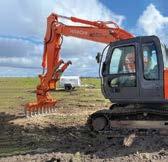

















King St East, Te Kūiti
Elvis and The Queens of Country show
Saturday, May 17
7pm, Free entry
Open to all, but club liquor laws apply.


Te Kūiti and District Memorial RSA would like to express our gratitude and thanks to all those involved in giving and collecting for the Poppy Day appeal.
A special thank you must go to Michelle and team at Waitomo District Council and to the team at the Waitomo Club for their support in making our Anzac Day so special in the remembrance of the fallen.
To keep this day continuing and alive we need your support. Please do inquire about RSA membership at the Waitomo Club.
ONWARD
B J Batley
President
WHAT HAPPENS IF
If you are unable to pay rates by June 30, 25 don’t panic - contact Rates Officer to discuss an acceptable payment arrangement.
Communication is the key.
Contact rates@otodc.govt.nz or 0800 734 000 if you have any questions and or need to set up a payment arrangement.
If rates are left unpaid, Council has the legal power to take the following steps for collection of rate arrears:
• Where there is a mortgage on the property, under Section 62 (1) of the Local Government (Rating) Act 2002, provides for Councils to recover rates owing from the Mortgagee i.e. lending institution.
• Forward the account to our Debt Collection agency for collection, which may impact on your Credit Rating


TAHAROA A7 J8 C LAND OWNERS MEETING
Trust Waikato Meeting Room 4 Little London Lane, Hamilton Saturday, May 17, 2025
AGENDA
9:30am - Arrival
10am - Karakia whakatuuwhera /Mihimihi/Apologies
10:20am -Morning tea
10:40am - Proposal to Partition
- Open floor discussion
- Resolution
11:30am - Karakia whakakapi
11:45am – Ka o te raanui
This is a friendly reminder that the fourth instalment of your 2024/2025 rates is due by 5pm, Friday 30 May 2025. Rates invoices were posted out in April.
Payments received after 5pm, 30 May 2025 will attract a 10% penalty.
Rates payments can be made at the Customer Service and Visitor Hub, 160 Rora Street Te Kūiti, over the phone by credit card, on our website or by Internet Banking using your valuation number as your reference.
Please contact our friendly Customer Services Team on 0800 932 4357 for further assistance.
www.waitomo.govt.nz
Ben Smit Chief Executive
Pursuant to section 28 of the Local Government (Rating) Act 2002 public notice is hereby given that the Rating Information Database is available for inspection at the office of the Council during normal Office hours or visit our website www.otodc.govt.nz
The Rating Information Database records all information required by a local authority for setting and assessing rates on properties within their district. For each rating property this includes its valuation and any categories that belong to that property that are used to charge separate targeted rates.
This database does not include the name of the ratepayer nor any address other than the physical street address of the property.
Tanya Winter CHIEF EXECUTIVE
Waikato Regional Council advises that under Resource Consent 124871 spraying of pest plants growing in aquatic and semi-aquatic locations will continue over the next three months.
Pest plants to be sprayed are listed in the Regional Pest Management Plan and include (but are not limited to): alligator weed, Manchurian wild rice, sagittaria, Senegal tea, spartina and yellow flag iris. Herbicides to be used are haloxyfop, imazapyr, metsulfuron-methyl and triclopyr. Application method is location dependent and may be by helicopter, gun and hose, mistblower or knapsack.
Operational areas are spread throughout the region and include (but are not limited to):
• Lakes Whangape and Waikare
• Te Otamanui Lagoon
• Waihou, Piako and Ohinemuri rivers
• Waikato River (from Horotiu to Port Waikato)
• Whangamarino and Maramarua rivers
• numerous smaller urban and rural sites.
Spraying is weather dependent and will occur during daylight hours on any day, including weekends but excluding public holidays.
For more information or to request to be notified visit www.waikatoregion.govt.nz/aquaticspraying or call Waikato Regional Council’s biosecurity pest plants team on 0800 800 401.
Occupiers who have already requested to be notified will be contacted prior to spraying.
CDA McLay Chief Executive


The Ōtorohanga RSA would like to thank everyone for their genuine support displayed to all on ANZAC & Poppy Day’s. Thank you to our volunteers, the Ōtorohanga District Council team, Ōtorohanga Club Inc, Moss and Co Floral Design, DJ Crombie, Te Kūiti Pipe Band, Peter Coventry, Maori Wardens, Ōtorohanga Museum, NZ Police, NZ Fire, St John Ōtorohanga, The King Country News, our schools, businesses and to our awesome community.
Thank you to the Ōtorohanga businesses, who got into the spirit of ANZAC Day by decorating their shops/ businesses in ANZAC Day theme. Also, a massive thank you to the lovely lady and boy who handed out their homemade biscuits.
PROPOSAL TO CLOSE ROAD TO VEHICULAR TRAFFIC
HAMILTON CAR CLUB ANNUAL RALLY SPRINT ŌTOROHANGA ŌTOROHANGA
Proposal to Close Road In accordance with the Tenth Schedule of the Local Government Act 1974, notice is hereby given that the Ōtorohanga District Council, for the purpose of allowing the Hamilton Car Club Annual Rally Sprint, proposes to close the following roads to ordinary vehicular traffic for the period indicated hereunder:
Sunday , August 17, 2025
• HODDLE Road – from intersection with Maihiihi Road to intersection with Tauraroa Valley Road.
• TAURAROA Road – From intersection with Hoddle Road to intersection with Maihiihi Road.
Period of Closures: 9 am to 5 pm
There will not be any detour in place.
Access for emergency vehicles will be allowed in the event of an emergency.
Pursuant to the Transport (Vehicular Traffic Road Closure) Regulations 1965, any person objecting to the proposal is called upon to lodge notice of their objection and grounds thereof in writing before 4pm June 5, 2025 at the offices of the Ōtorohanga District Council, 17 Maniapoto Street, Ōtorohanga or email to andrea@otodc.govt.nz






rugby

















Will buy or muster feral goats Prompt pick up and payment
Piopio
WITHERS Brian – Our family of the late Brian Withers wish to express our heartfelt thanks to the many friends & family who attended the funeral service for Brian. To all those who sent flowers, made phone calls and for so much love, support, meals, baking and cards, too numerous to acknowledge separately.
Please accept this as a personal Thank you for your support at this sad time.
Special mention of thanks to our whanau Lee & Romina Donell and all the Barton family, neighbours, friends and our extended family who helped us all so much during this time.

Tuhoro Street, Ōtorohanga Ph 07 873 8890 Mob 027 493 0117 Email harvest.pc@xtra.co.nz ALL WELCOME.
Pastors Peter & Carole Coventry (An Assemblies of God Church)




Thank you also to the police, ambulance, paramedics, fire brigade and staff who attended the accident and Dr John and staff of Kāwhia Health Centre.
Please accept this message as a personal acknowledgment of sincere appreciation as many addresses are unknown.
LITTIN, Donald Henry Lionel ‘Don’ – Passed away peacefully on May 11th 2025, aged 85 years. Loved husband of Elaine. Loved father and father-inlaw to Gaewyn and Craig, Wendy, Jeff and Esther, Ross and Karen. Poppa Don to Deklan and Ellen, Sam and Jenna, Lee and Simon, Ashley and Brett, Kimberley, Daniel and Emma, Harry, George and Zak, Stormy and Sam, Clay and Tara. Great grandad to Claire, Theo, Charlie, Hughie, Wyatt and Mark. A service to celebrate Don’s life will be held at the Chapel of Morris and Morris Funerals, (entrance 17 Western Hills Drive), Whau Valley, Whangarei, at 10:30am on Friday 16th May 2025 followed by a service held at graveside, Maunu Cemetery, Whangarei. All communications to ‘The Littin Family’ C/- P.O. Box 8043, Kensington 0145. Morris and Morris Funerals
TOPLESS, Bruce Barnard – Passed away peacefully on 8 May 2025. Loved father of James, Kate, and Susan, father-in-law of Abby, Tauia, and Bruce, and grandfather of Hunter, Maddy, Jack, Maggie, Tessa and Lachlan. Now walking in the fresh air with Ann. In lieu of flowers, donations to the Cancer Society. A memorial will be held at the Te Awamutu College Pavilion, Sunday 18 May, 1pm.



FuneralServices
Funeral Services
Funeral Services
FuneralServices
FuneralServices
FuneralServices
Funeral Services
Funeral Services
Funeral Services
Gift Shop

• Casket sprays
• Casket sprays
• Casket sprays
• Casket sprays
• Casket sprays
• Casket sprays
• Casket sprays
• Wreaths
• Wreaths
• Wreaths
• Wreaths
• Wreaths
• Arrangements
• Arrangements
• • Catering
• Wreaths ts Services
• Arrangements • Catering
• Arrangements
• Arrangements
• Arrangements
• Catering
• Catering Giftware Cabinet Food Coffee Frozen Meals
• Catering
• Catering
• Catering
Sunday 10am
Session clerk Ph 07 873
96 Rora Street, Te Kūiti 07 878 8882 or 027 567 1930 bloomsandbrewsnz@gmail.com
96 Rora Street, Te Kūiti 07 878 8882 or 027 567 1930 bloomsandbrewsnz@gmail.com
96 Rora Street, Te Kūiti 07 878 8882 or 027 567 1930 bloomsandbrewsnz@gmail.com
96 Rora Street, Te Kūiti 07 878 8882 or 027 567 1930 bloomsandbrewsnz@gmail.com
96 Rora Street, Te Kūiti 07 878 8882 or 027 567 1930 bloomsandbrewsnz@gmail.com
96 Rora Street, Te Kūiti 07 878 8882 or 027 567 1930 bloomsandbrewsnz@gmail.com
96 Rora Street, Te Kūiti 07 878 8882 or 027 567 1930 bloomsandbrewsnz@gmail.com
96 Rora Street, Te Kūiti 07 878 8882 or 027 567 1930 bloomsandbrewsnz@gmail.com
96b Rora Street,Te Kūiti 07 878 8882 bloomsandbrewsnz@gmail.com
96 Rora Street, Te Kūiti 07 878 8882 or 027 567 1930 bloomsandbrewsnz@gmail.com



Here when it matters most
Losing a loved one is difficult, but you don’t have to go through it alone. Our local, caring, and supportive team provides expert guidance with warmth and respect.
Reach out 24/7 – we’re here for you.